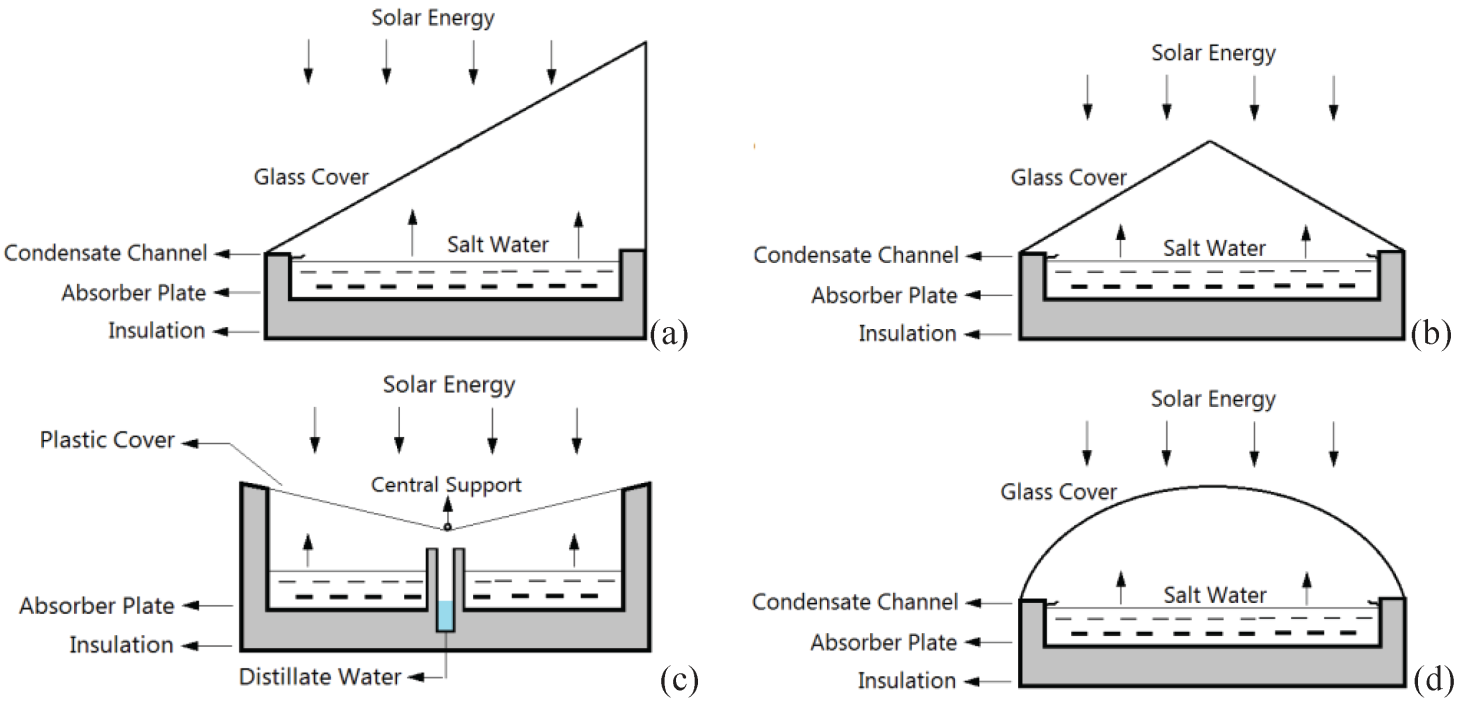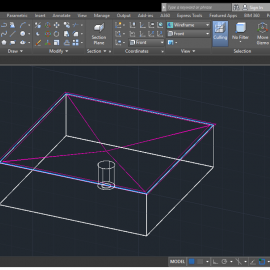Designing Model for Solar Distillation of Water
Nirupa Jain
(Research Scholar doing M. Tech. in Manda Institute of Technology, Bikaner)
Krishan Kumar
(Research Supervisor, Manda Institute of Technology, Bikaner)
Dr. Anshumala Sharma
(Research co-supervisor, Manda Institute of Technology, Bikaner)
Abstract
The present study is based on designing a water purifying system for water distillation using solar energy. The present study is based on field work and has been carried out using experimental research method. The design of the solar based water distillation system is presented herewith.
Keywords: Solar, product, SDG, water
Water has been one such commodity, which has been depleting fast. This has been one of the most important elements for mankind, but it has been a tragedy that there has been depletion of fresh water resources. There has been now only one option – the option of purification of water using some sustainable technology. Although there have been many ways to purify water, but there has been a need of sustainable technology, which may not cause any harm to the environment. One such technology has been solar based technology. Water purification has become an important issue for the scientists. A large number of scientists are trying to develop new technologies in this sector. A large number of scientists have developed technologies in this domain. The researchers have also decided to focus on this issue due to the requirements of the mankind and its importance in the future. The present research is based on experimental research, where the research objectives have been well defined and discussed in terms of water purification through solar rays using evaporation and condensation of water to separate it from impurities. We have conducted our research using repeated experiments and designed the model based on the achievement of the objectives. The research process has checked the quality of water through the experimental model and the improvement in quality of water is meeting our level of significance for this research.
Research Methods and Research Model Explained
Water evaporates on heating and condenses on cool temperatures. This principle is the base of designing the present model. We have used the following steps:-
- The model collects solar rays in order to increase its temperature, which results in increase in temperature of water, which results in conversion of water into vapors. these water vapors get collected near the upper ceiling and walls of the model and gets converted into water and slowly trickle down due to gravitational pull.
- The model has been so designed that the water is collected separately and this water doesn’t mix with the water which is subject to heat treatment.
- The model has been designed keeping the requirements of the model. The material used for this distillation is such that the material is helpful in raising temperature and thereby increasing the water evaporation.
Design of the model
The design should be as such, where the surface area of the water should be as much as possible, so as to supply more volatile vapors.
The side of storage of pure water should have lower height than other corners.
The design should be so constructed that, the heat gets concentrated on the surface of water.
Different structures of the Solar Distillations
The principle of the solar distillation may be applied via different structures. Various types of structure cause different efficiencies. Some of the most common structures of solar distillation have been discussed below.
Figure 1. Structures of solar distillations
As shown, these have been the different structures. In all the structures, the system contains absolute plate and has been insulated so as to prefect the leakage of the vapors. In the structure (a), (b), and (d), the condensate channel focus the condensation to flow into the out ward direction, whereas, in the (c) structure the storage of the pure water has been in between the system.
Basic components
The common components of any distillation structure have been:
- Impure water storage (aluminum base)
- Absorber or cover plate ( polycarbonate sheet)
- Carbon block
- Any kind of pure water storage
The insulation in the distillation prevents the leakage of water vapor, as well as the pressure drop so as to increase the evaporation rate. The greater the evaporating rate, the faster will be the process. The insulation maintains the rule of a closed system for the process. The system has been simply insulated by the rubber and glue material.
The absorber plate plays the role of storing more heat energy. The energy source for the distillation has been the solar heat via rays. The absorber plate absorbs the heat and keeps it to the system, so as to increase the entropy of the system. The increment in the entropy leads to the formation of more vapors and increases the pressure.
Properties of material used
Materials used in the instruments have been as follow:
- Base metal – aluminum
- Glass – polycarbonate
- Coating – bitumen seal compound
Aluminum
Aluminum or aluminum has been found to be a useful chemical element for making this type of model. It is of light weight and has the required properties of heat absorption as required in the model.
Polycarbonate
We required a durable material for our model, we chose this because this material can be compared to those of polymethyl methacrylate (pmma, acrylic), and it has been found to be stronger and therefore it may hold longer during extreme temperature. Polycarbonate has been found to be transparent to visible light, enabling better light transmission in comparison to other available materials.
Bitumen seal compound
During designing the model, bituminous waterproofing systems have been designed to protect residential and commercial buildings. Bitumen (asphalt or coal-tar pitch) has been a mixed substance made up of organic liquids that have been highly sticky, viscous, and waterproof. These systems have been sometimes used to construct roofs, in the form of roofing felt or roll roofing products.
Activated Carbon Filters
Activated carbon filters are generally used in the process of distilling organic compounds and/or removing free chlorine from water, in order to make the water suitable for use in various processes in manufacturing or in some other uses. Removing organic material from potable water, for example, removing humid and folic acid, stops chlorine in having chemical reaction of water with the acids to form trihalomethanes, which is a carcinogen.
Solar Energy
Solar energy is energy generated from solar rays, which are emitted by the Sun. We use photovoltaic, solar thermal energy, and artificial photosynthesis for the purpose of extracting this energy from solar rays. This is indeed a very important source of renewable energy. This cannot end and therefore we can expect the solar energy to remain with us for a long time period. Solar energy can be collected from solar rays and can be distributed as a source of power. Solar energy is a perennial source of energy, however, the initial costs of installation of solar plants is relatively high at present. We can expect that in the years to come, the installation costs of solar plants will come down due to rising volume of solar plants. The use of solar energy is rising very fast. This is a healthy sign for a brighter future. This will help us in moving towards sustainable development goals. Solar energy would enable us to take use of non-carbon based sources of energy and this is required under sustainable development goals. At present, there is total photovoltaic capacity of over 300 GW, which is approximately 1.8% of the total world energy requirements. However, the use of solar energy is rising at a very fast rate in countries like India due to its locational advantages. India is setting up world’s largest solar plant. India has established solar villages, solar cities and solar cinema halls. Many government buildings are taking solar energy for their primary energy requirements. India has the advantages of being a country rich in solar energy resources.
Diagram of the working model
Dimensions
- Aluminum base
- Length-73 cm
- Breadth-73cm
- Height-24cm
- Aluminum Cylinder
- Diameter-6.8cm
- Height-7cm
- Carbon block
- Diameter-6cm
- Height-7.5cm
- Bottom Diameter-2cm
- Polycarbonate glass
- Triangle
- Base-73cm
- Isosceles sides-50cm
- Pyramid (4 sides)
- Height-5cm
- Base-73cm
- Declination of base-8 degree(approx)
Construction
- The four polycarbonate triangles have been bolted together forming a pyramid. The pyramid has been sealed glue soldering.
- The Aluminum base box which has been manufactured by simple cutting and hammering process has been sealed with the use of M-seal.
- The Aluminum base box has been painted with bitumen seal compound so as to provide covering and preventing any reaction. The color has been black so as to maximize temperature according to theory of black body radiation.
- The carbon block fits automatically with the help of gravity. The carbon filters may be changed by substituting the carbon granules.
- The Aluminum base box boundary has been sealed with the rubber tubes, which helps in keeping increasing friction and isolating the system.
- The pyramid has been held upside down on the Aluminum base and it has been assembled.
- The whole system has been placed any water storage which may collect he purified water.
- The system has been meant for the area which allows sunrays.
Conclusion
The equipment has been found to be able to purify water for the drinking purpose. The light weight of the equipment enables its portability. The equipment may be easily transported or established anywhere. For working of the equipment it has been observed that the equipment should be properly assembled, the availability of the sunlight has been necessary for the working of equipment.
The equipment due to its black color has been able to maintain a good temperature. Water has been easily collected through the carbon block. The water has been purified for the drinking purpose. The equipment has been perfect for additional storage of pure water, but for more quantity and for short duration it has been not suitable. The purification process holds a major disadvantage because of its speed. The water procedure consumes more than expected time.
The plant has been found to be suitable for the hot desert area where the temperature and sun light have been sufficient. However, it has been not found suitable for low temperature or cloudy places.
References
- Foley, N. L., & Cheney, A. H. (1971). S. Patent No. 3,558,436. Washington, DC: U.S. Patent and Trademark Office.
- McKeen, J. E. (1980). S. Patent No. 4,235,678. Washington, DC: U.S. Patent and Trademark Office.
- Chaibi, M. T. (2000). An overview of solar desalination for domestic and agriculture water needs in remote arid areas. Desalination, 127(2), 119-133.
- Stumm, W, Morgan, J. J. (1981) Aquatic Chemistry, An Introduction Emphasizing Chemical Equilibria in Natural Waters. John Wiley & Sons. pp. 414–416. ISBN 0471048313.
- Gupta, B., Mandraha, T. K., Edla, P. J., & Pandya, M. (2013). Thermal modeling and efficiency of solar water distillation: A review. American Journal of Engineering Research, 2(12), 203-213.

